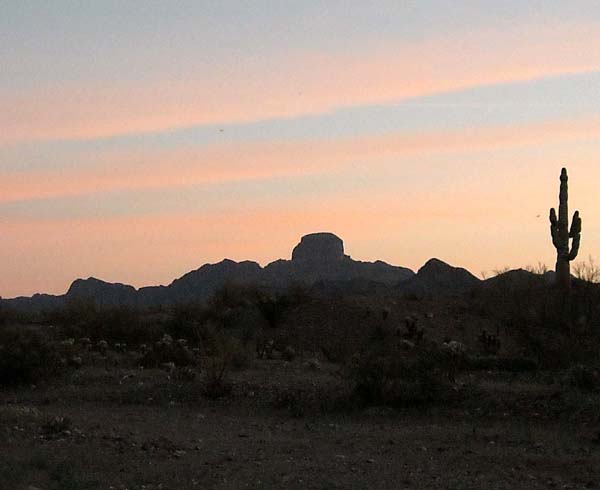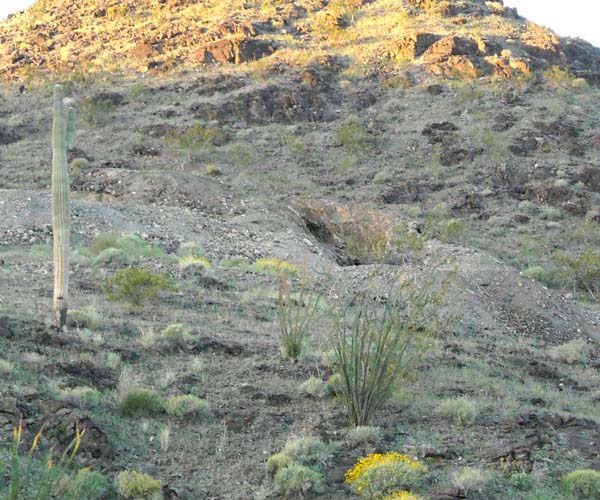
Collecting Report spring 2009:
My first trip to Yuma a year ago was so successful that I decided to give it another try this spring. I did some considerable advance planning and mapped out some new mine sites in the Castle Dome area to visit. This time I tried some mines further south and further east. As can be expected, only a small fraction of the new locations had good fluorescence. Those included the Eighty-One Mine, the Colorado Mine, the Nayal Black Hawk Mine, and some new prospects in the Linda Group and Castle Dome Mine area. In fact, so many new pieces have been added that I have split the Castle Dome area into three pages. The specific pages have more details about what was found in each of those areas.
Like last year I a few encounters with the local wildlife. This time I found two speckled rattlesnakes, one was a beautiful orange-tan color with brown bands. The other major sighting was a white-tailed deer. On this page I have added some more pictures of Castle Dome Peak and some other interesting features.

In the spring the Sonoran desert is in bloom. Here are some magenta prickly pear cactus flowers.

A distant view of Castle Dome at sunrise.

A hill in the opposite direction at sunset.

The mine maps list this location, about two miles south of Castle Dome, as the Red Bluff Mountain area. This nearby mountain certainly shows a little reddish color.

This is one of the hills in the Nayal Black Hawk area, shown at sunrise. The picture below shows a closer shot of some the mine tailings.


This picture was taken while standing near the top of the same hill as above, facing south over an old lava flat with distinctive fissures that provide just enough soil for a few hardy plants to survive.

This is an ariel view of the same lava flat.
Collecting Report, April 2008
Fluorescent specimens from Castle Dome are seldom seen for sale nowadays, partly because the Castle Dome and surrounding mines have been closed to collecting for some time. In the past some very nice pieces came from the area so I determined to find out if there was anything left. My recently departed friend George Young, who spent his last years in Yuma, introduced me to the caretaker of the Castle Dome Museum. Although he went as far as offering to take me into the mine itself via rope and harness, I felt much safer just checking the dumps. When I did so I was disappointed to find almost nothing that was worth collecting. I had better luck checking the various prospects in the area surrounding the mine. Even then I found very little of the classic 3-color combinations. What I did find was some some oddball combinations such as Fluorite with Hyalite or Caliche and some pieces with Hydrozincite.
The Hull Mine was more cooperative with my expectations and did produce some classic-type pieces. There were about 20 different tailing piles at the mine and the surrounding area. I searched all of them thoroughly and found that only two of the piles had any significant amount of fluorescence, one on the north side of the hill and one on the south. The tailings on the south side had obviously been hit by other collectors before as there was not much left. The pile on the north side, however, seemed to have escaped the notice of most collectors and I had some success there. Even so, there was really not a lot to collect and I exhausted what was there without trying very hard.
Most of the pieces are moderate in brightness under shortwave UV, although the Calcite and Fluorite are quite brilliant under midwave UV. The Caliche from this area also responds well to midwave and so some of these combinations are best viewed under a midwave lamp. However midwave UV does not illuminate the Willemite or the occasional occurrence of Hydrozincite, so pieces with those minerals are often best viewed under a combination of shortwave and midwave or sometimes shortwave and longwave.